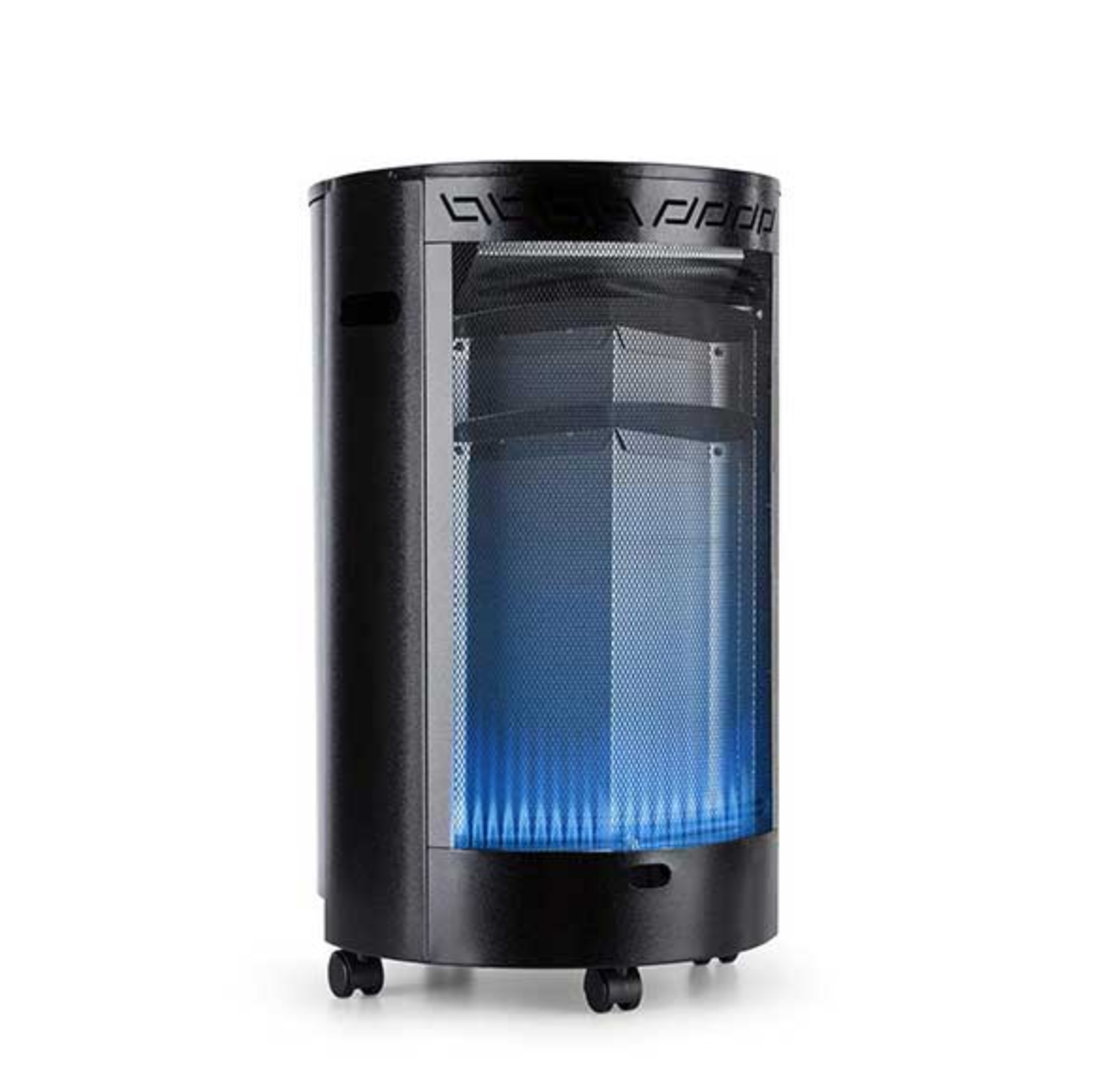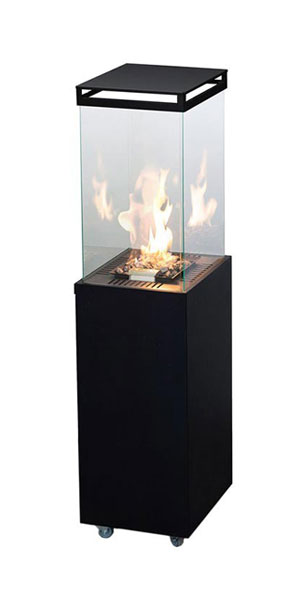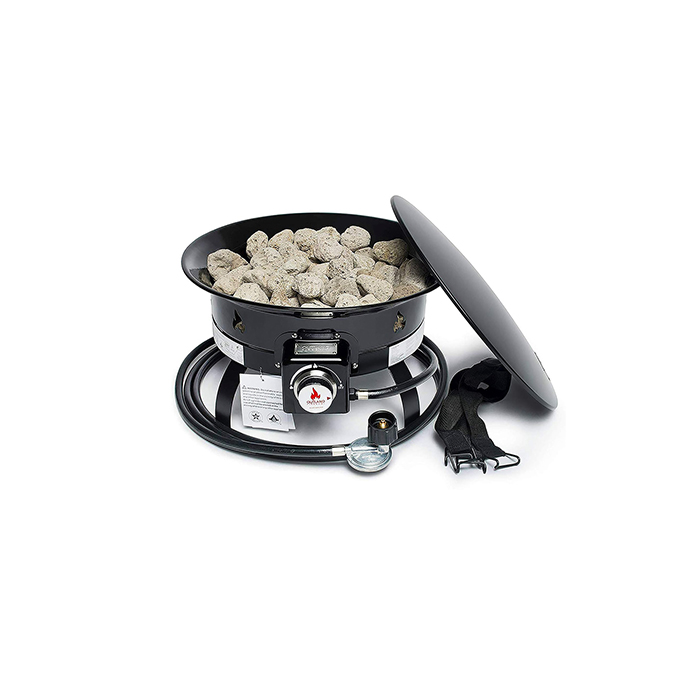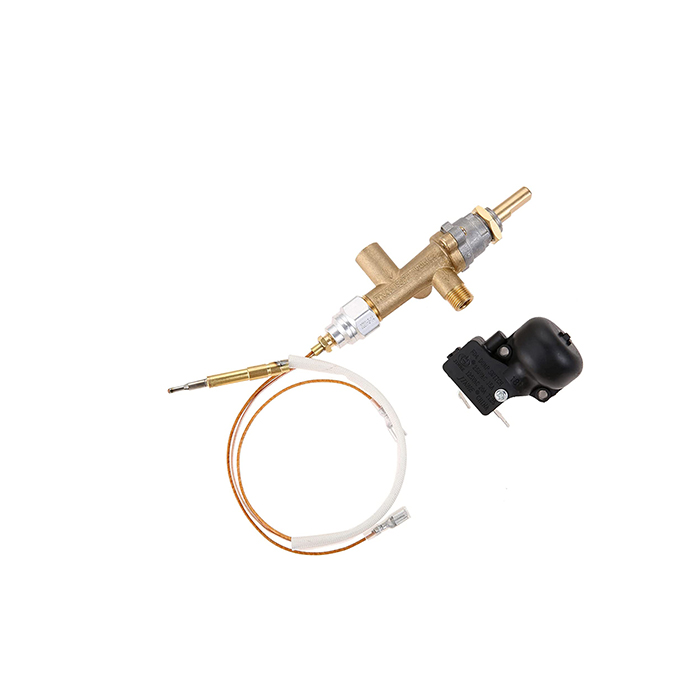BTU is one important thing that we can’t ignore when you purchase a patio heater ,fireplace, fire pit, or even a grill. BTU stands for British thermal Unit It is a unit that measures the heat generated by your burner. In technical terms, one British thermal unit will increase the temperature of a pound of water by 1 degree Fahrenheit. When it comes to a fire pit or fireplace, higher BTU’s mean the more heat and more flame the fireplace or appliance with generate. In a fire pit or any other outdoor appliance, BTU output generally ranges from 30,000-100,000. So, the higher the BTU of the fire feature, the more warmth it will provide.
Apart from BTU there are several other factors that affect the flame height and appearance on a burner. Some of these things are:
The amount of air mixed with gas before it is burned affects the flame height and overall color. The more the air, bluer and shorter will be the flame. However, it will be cleaner and will have a higher temperature.
Larger main injector (orifice) in the burner means more BTUs
Higher gas pressure also means more BTUs
Natural gas has less BTUs/cubic feet compared to liquid propane
Liquid propane and natural gas are sold by the BTU. This means, the more BTUs the burner uses per hour, the higher it will cost you to run the fireplace or fire pit. So, even though you may want a higher BTU measure for your fireplace or fire pit, you will also need to consider other factors while making a choice.
People building gas (natural gas NG or liquid propane LP) fire pits start at the end of the process and work backwards and are often disappointed with the results. Fire pit design must start with the fire ring (the burner). The final size and height of the pit depends on the proper selection of this one component. Fire rings generally come in 6 inch increments starting at 6 inches up to 48 inches. Burners are custom made above 48 inches. The rings are made of either black iron or stainless steel. Black iron is more susceptible to corrosion than stainless steel, but should still be serviceable for 2 to 4 years depending on the climate. Compare Seattle, Washington to Flagstaff, Arizona, for instance.
First Rule: The bigger the fire ring(also called ” fire plate “) the shorter the flame at the same gas pressure. An 18 inch ring will have a 22-24 inch flame at 150,000 BTU at the pit. A 24 inch ring will produce a flame about 18 inches tall at the same pressure.
The fire ring affects the design of the pit because of space and offset distance requirements
A good rule of thumb is to make an above-ground fire pit 12-14 inches tall. This is a few inches shorter than standard patio furniture seat height. If you want to be able to sit on the edge of the pit itself go a bit higher, 18-20 inches will be comfortable. A fire pit any taller will actually hold heat in and make it hard to enjoy while sitting in chairs.
Most free-standing propane heaters have a heat output of roughly 40,000 Btu or more, and gas fire pits can be rated similarly. Some vendors often claim this can raise outdoor temperatures by anywhere from 10 to 25 degrees within a radius of 9 feet. However, owner-written reviews indicate these estimates are exaggerated. In reality, the heating range is more like 3 to 5 feet or less in cold, windy weather. The smaller tabletop models, which produce only 10,000 Btu or so, may only provide warmth within a couple of feet of the heater. Electric patio heaters (either standard or halogen) put out the least heat of all — most consumer models are rated at 1,500 watts (or less), which converts to roughly 5,100 Btu. Wood-burning fire pits don’t carry Btu ratings — their only purpose is to contain a fire that you build inside of it. If you want to heat a large area, experts advise placing multiple heaters 8 to 20 feet apart.
Created by esteemed Dr. Sreeram Srinivas
- Have a crush on Patio with Sinoheat Patio heater!
- Languages
- Wishlist
-
Newsletter
Sign up for Newsletter
Signup for our newsletter to get notified about sales and new products.
- Have a crush on Patio with Sinoheat Patio heater!








